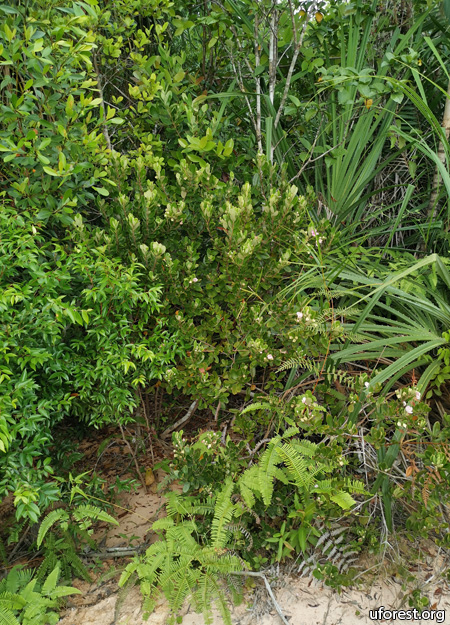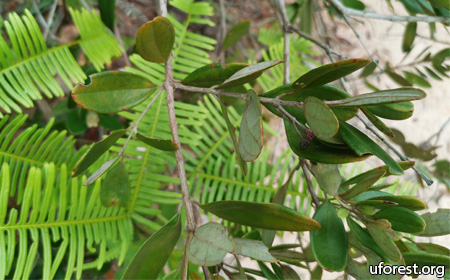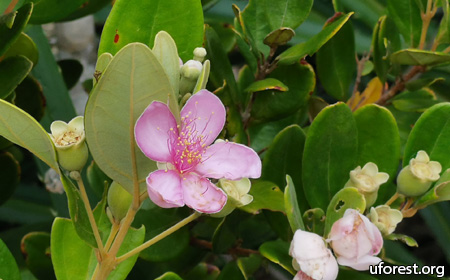Rhodomyrtus tomentosa (Aiton) Hassk.
| Etymology | Genus | From Greek, rhodo (red) & myrtos (myrtle), referring to the red, myrtle-like flowers |
|---|---|---|
| Species | Hairy, of the leaf underside | |
| Family | Myrtaceae | |
| Synonyms | Cynomyrtus tomentosa (Aiton) Scriv., Myrtus tomentosa Aiton | |
| Common Names | Rose Myrtle | |
| Status | Native: Vulnerable | |
| Form | Shrub | |
| Native Distribution | China, India Subcontinent, Indochina, Malesia | |
Diagnostics:
Growing up to 3m tall, Rhodomyrtus tomentosa has opposite leaves with 3 distinct veins. The underside of the young leaves are often woolly white. Most obvious are its attractive and frequent-blooming pink flowers. In Singapore, it is found along sandy beaches and also Adinandra Belukar forests.
Interesting Facts:
The Rose Myrtle has been used for traditional Chinese & Malay medicine, including treatment for "acute and chronic gastroenteritis, stomach ache, dyspepsia and hepatitis, skin infections and also as an antiseptic"; among many others (Globinmed, 2016).

Small shrub at Galang Island, Batam, 2019.

Leaf underside.

Branching.

Rose pink flower.
References
Globinmed. (2016) Rhodomyrtus tomentosa (Aiton) Hassk. Global Information Hub on Integrated Science, Institute of Medical Research, Ministry of Health, Malaysia. http://www.globinmed.com. Accessed on 2-Nov-2019.
Author: Siyang
Posted: 2019-11-02 / Modified: 2025-10-27